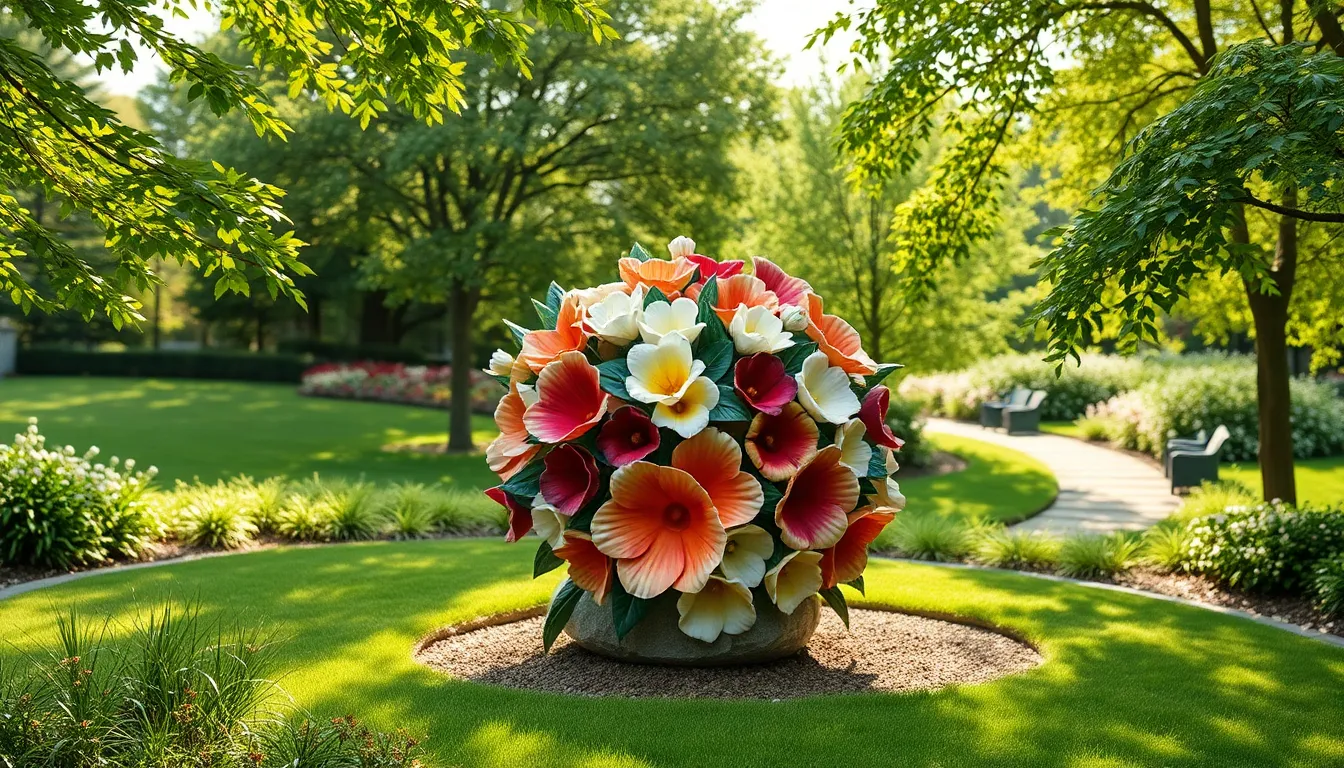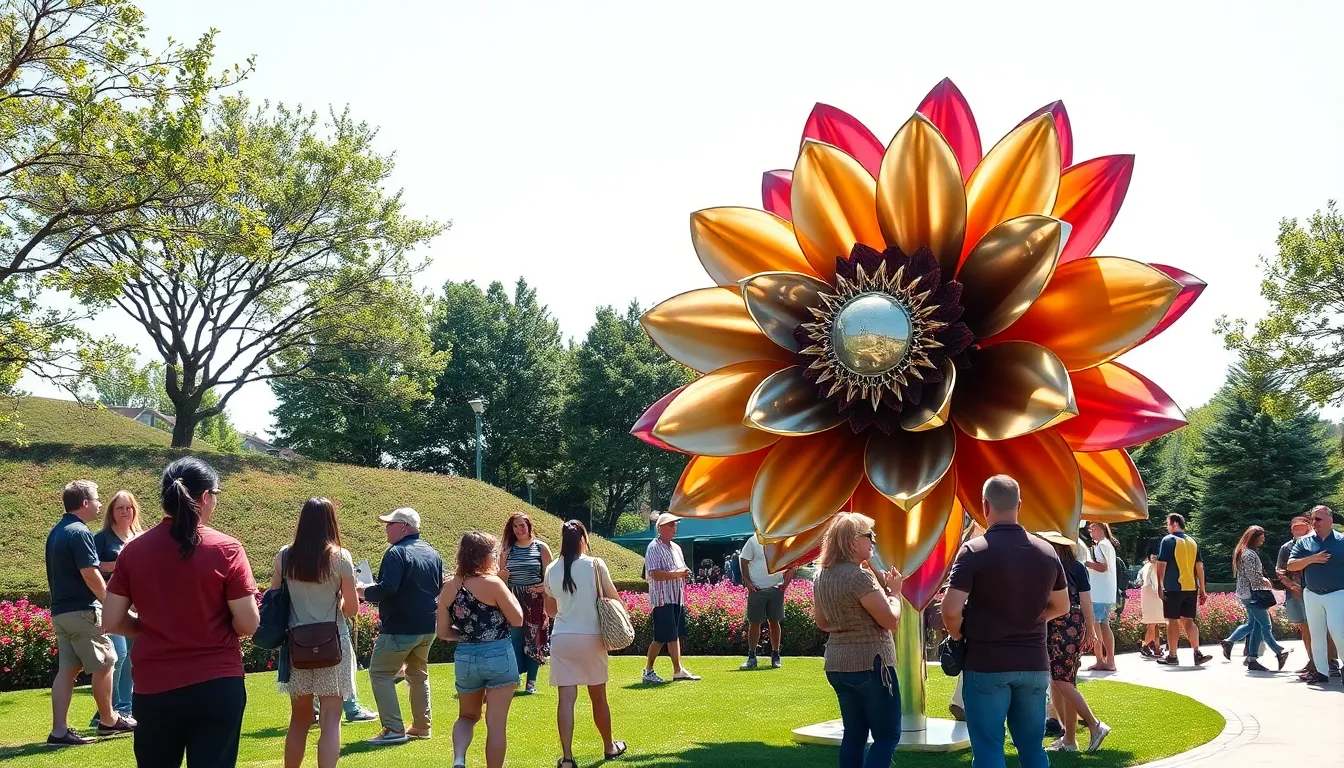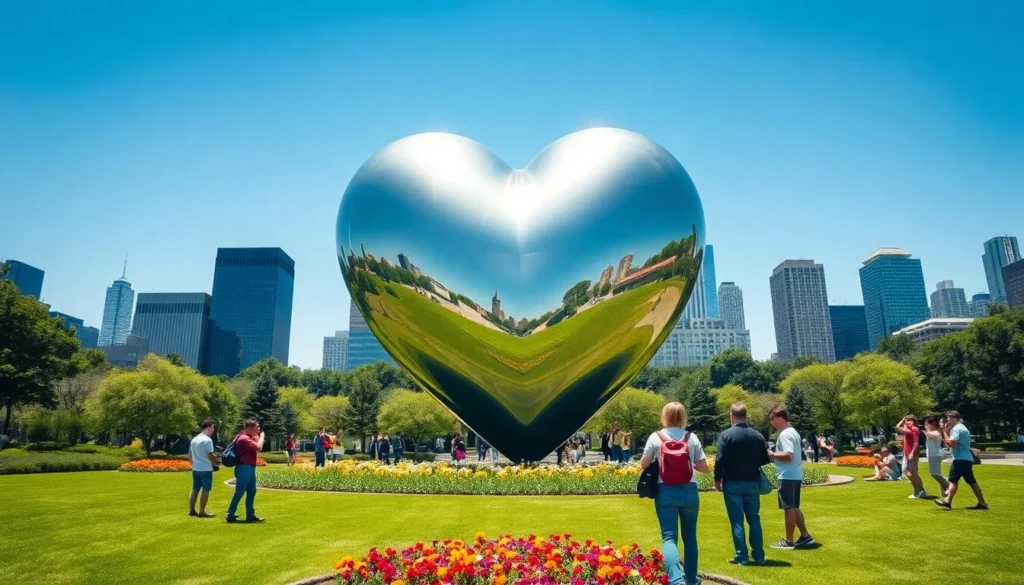Table of Contents
ToggleEver walked through a garden and thought, “Wow, those flowers are beautiful, but imagine if they were a sculpture?” Well, buckle up because flower sculpture takes that beauty and elevates it into an art form. It’s where nature and creativity collide in a rainbow of petals and imagination. Flower sculptures are not just decorative pieces: they tell stories, evoke emotions, and sometimes even make you chuckle. So, whether you’re an art aficionado or someone who just appreciates pretty things, this journey through the world of flower sculpture is about to get blooming interesting.
History of Flower Sculpture

The history of flower sculpture is rich and vibrant, much like the colors found in nature. This art form can be traced back to ancient civilizations, where flowers weren’t just for admiration, but also held deep symbolic meanings. The Egyptians, for instance, crafted intricate flower arrangements to honor their gods, while the Greeks used blossoms to celebrate beauty and vitality. As time rolled on, the Japanese perfected the art of Ikebana, a floral arrangement technique that is both minimalistic and deeply philosophical. Fast-forward to the Renaissance, and you’ll see that sculptures of flowers began to bloom in gardens across Europe, reflecting a newfound appreciation for nature in art. Each era added its own flavor to this stunning artistic try, proving that flowers have always been a source of inspiration.
Cultural Significance of Flower Sculptures
Flower sculptures do more than just beautify a space: they carry significant cultural meanings across different societies. In many cultures, flowers symbolize life, death, and rebirth. For example, lotus sculptures in Asian cultures represent purity and spiritual awakening. In Western art, the rose is often associated with love and passion, making it a popular subject in flower sculptures. Festivals around the world celebrate flowers, showcasing stunning floral artwork that often turns entire towns into colorful canvases. Imagine a gigantic sunflower sculpture lit up at night, serving as a beacon of hope and joy. Each flower sculpture tells a story rooted in cultural beliefs, making this art form a vital part of human expression.
Types of Flower Sculptures
When it comes to types of flower sculptures, the range is almost as diverse as flora itself. From traditional to contemporary, each type has its charm. Classic flower bouquets, rendered in stone or metal, evoke a timeless elegance. On the other hand, whimsical sculptures featuring oversized flowers capture the whimsical aspect of nature. There are also abstract interpretations that challenge the norms – think twisted metal designed to resemble the delicate curves of petals. Outdoor installations can transform public spaces with life-sized flower figures that invite interaction. Each type serves its purpose, whether it’s to convey a message, provoke thought, or simply bring joy.
Techniques and Materials Used
Creating a flower sculpture is as much a science as it is an art, involving various techniques and materials. Traditional methods often use materials like stone, bronze, or clay, allowing for durability and an element of permanence. Emerging artists, but, are veering into unconventional territories with eco-friendly materials like recycled plastic or even natural elements such as wood and metal. Techniques vary widely – from intricate carving to welding, each technique offers unique textures and finishes. While some opt for hyper-realistic representations, others embrace abstract forms, sparking a conversation about the meaning of beauty in art. The choice of materials can drastically influence the perception and impact of a sculpture, making this aspect of flower sculpture truly fascinating.
Famous Flower Sculptors and Their Works
Throughout the history of flower sculpture, some artists have left an indelible mark on this art form. Take Georgia O’Keeffe, for instance, who challenged the boundaries of flower depiction, transforming them into powerful symbols of femininity and strength. Her paintings inspired many sculptures that play with scale and form, blurring the lines between the two mediums. Another noteworthy figure is Brazilian artist Daniele Violetti, known for his vibrant and interactive flower installations that captivate audiences worldwide. Each artist brings their unique perspective to the flower sculpture realm, enriching the landscape of this timeless art form and inviting new interpretations and explorations.
How to Create Your Own Flower Sculpture
Feeling inspired to create your own flower sculpture? It’s easier than you might think. Start by choosing a medium that resonates with you, whether it be clay, metal, or even recycled materials. Sketch out your design, considering the overall shape and scale. Once you have your concept, gather your materials and tools. Don’t forget to make it personal – maybe incorporate colors or shapes that hold special meaning to you. As you sculpt, embrace the process without worrying too much about perfection: every piece tells a story, imperfections included. After completion, find a beautiful spot for your sculpture, perhaps even in your garden, where it can flourish alongside real flowers.
The Future of Flower Sculpture
The future of flower sculpture is blooming with possibilities. As technology advances, so do the methods of creation. Artists are experimenting with digital tools to design sculptures that can be brought to life through 3D printing. This innovation allows for previously unimaginable shapes and forms, giving rise to a new era of floral expression. Sustainability is also playing a significant role: artists are increasingly focusing on eco-friendly materials, aligning with the global push for environmental consciousness. As the world continues to evolve, so too will flower sculptures, adapting to cultural shifts and technological advances while still holding heart and beauty at their core.




